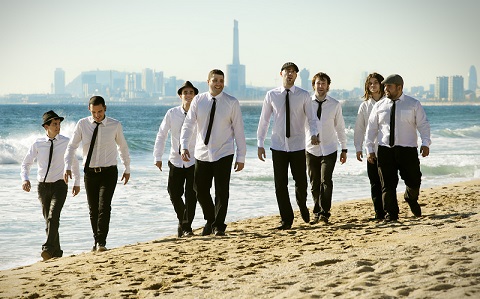Catalan Rumba, the soundtrack of Barcelona
Catalan Rumba is part of the Catalan cultural heritage as much as the traditional folk dance Sardana or the famous human towers known as Castellers. This musical genre, born on the streets of Barcelona during the Sixties, is often mistaken for flamenco or other popular Latin sounds. Musicians such as Peret, Antonio González ‘El Pescaílla’ or Gato Pérez were pioneers of this style and contributed to its institutional and social recognition. Different waves of groups and artists have left their footprint on the Catalan Rumba, which is experiencing a third new age defined by a more eclectic sound that reflects Barcelona’s multicultural and cosmopolitan lifestyle.

Barcelona (CNA).- Catalan Rumba, also known as Gypsy Rumba, is not flamenco, pop or rock music. It is a way of living, sensing and expressing feelings. This kind of music, born in the heart of Barcelona during the Sixties, is without a doubt as much part of Catalan identity as the typical folk dance Sardana or Castellers, the traditional human towers. The Sixties were the golden age for Catalan Rumba, a time when artists “were treated as jet-set” and used to wear fancy suits, according to musician and producer Johnny Tarradellas. Although it has been less popular for some years, nowadays this genre is experiencing a fresh powerful period with a wave of new groups. A cheerful sound that now enjoys official recognition in the Catalan Parliament and can be heard in many bars and pubs all over the city.
Rumba Catalana also has its master: Peret. Born in a gypsy settlement near Barcelona, he made his debut at just twelve years old in the Tívoli Theatre along with his cousin. Since that moment, although he disappeared from the media focus over the last few years, he has been the Frank Sinatra of Catalan Rumba, according to most musicians and music experts.
Peret played a different music with a unique sound that fused mambo rhythms with unorthodox flamenco and used the wood of the guitar as a percussion instrument. Most importantly, he introduced the main trick of Catalan Rumba: the “fan technique”, an unusual guitar strumming pattern that incorporates percussion on the guitar body, making the most of the instrument.
A music born from the joy of a party
Catalan Rumba emerged from the coming together of many different historical and musical elements. From Afro-Cuban sounds to popular Mediterranean music, various styles have contributed to the appearance on the scene of this particular genre.
Social anthropologist and Rumba expert Martí Marfà explains how “the Catalan Gypsy Community made a musical synthesis out of various Latin sounds”. Traces of flamenco, Cuban music, rock, pop and all sorts of traditional Mediterranean music can be found in Catalan Rumba songs. “Music is a living thing and it evolves”, Martí Marfà explains to make a point about how Catalan Rumba has been transformed over decades by new trends and musical genres.
If there is someone responsible for the creation of Catalan Rumba that would be the Catalan Gipsy community, especially the one based in Barcelona. Musicians such as Peret or Antonio González ‘El Pescaílla’ used to play on the streets of neighborhoods like Gràcia, el Raval and Hostafrancs, where the Catalan Rumba started to gain popularity during the Sixties.
During the Franco days, when the regime tried to appeal to international tourism, the Catalan Rumba became the soundtrack of that era, according to social anthropologist Martí Marfà. This kind of association between the Catalan Rumba and the Francoist dictatorship caused a sudden loss of prestige during the Spanish transition to democracy.
Many years later, in the late Seventies, an Argentine guitarist came to Barcelona to bring Catalan Rumba’s prestige back. Gato Pérez started a new age for Catalan Rumba defined by more critical lyrics and a fresh sonority. “He started to sing to the working class” explained Johnny. His efforts helped to popularize it again and increased its social acceptance. The artist inspired a new generation of Catalan Rumba bands who took more risks and revitalized the genre.
Past and present of Catalan Rumba
“All Catalan Rumba musicians have had similar lifestyles, they grew up in the same neighbourhoods and have had similar influences with a common rhythm” said Johnny Tarradellas. He was born amidst guitarists and lively spontaneous jams, which led him to make his living out of Catalan Rumba. Tarradellas emphasized that this kind of music is tied to certain values, which are very strong in the Gipsy community, for instance respect for the audience and good presence on the stage.
The nonprofit association Foment de la Rumba Catalana - FORCAT (Promotion of Catalan Rumba in English) is thoroughly dedicated to the promotion and recognition of Catalan Rumba at both national and international level. The organization claims this musical expression as part of the Catalan cultural heritage and works for its institutional and social acceptance.
In order to achieve this goal, FORCAT organizes many events and campaigns such as the Diada de la Rumba Catalana (Catalan Rumba Day), which took place last November in different cities all over Spain and included workshops, conferences and concerts. They also work on promoting old and new rumba bands, such La Màlaga Essència Rumbera, a group born in 2009 in Barcelona, or Los Manolos, who performed during the closing ceremony in the 1992 Barcelona Olympic Games. The objective of FORCAT is to connect the three generations of rumba musicians alive now on the stages of Barcelona and Catalonia by sharing and learning this unique local sound.